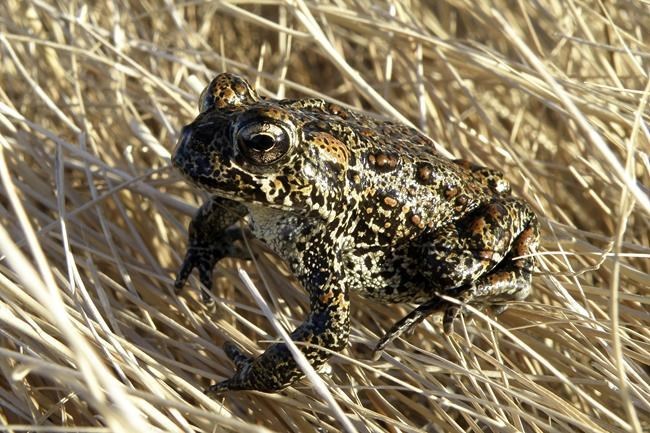RENO, Nev. (AP) — In a rare emergency move, the U.S government temporarily declared a northern Nevada toad endangered Monday, saying a geothermal power plant in the works could result in its extinction.
The Fish and Wildlife Service announced it is formally proposing a rule to list the Dixie Valley toad as an endangered species subject to 60 days of public comment under the Endangered Species Act's normal rulemaking process.
But it said the emergency listing goes into effect immediately and will continue for eight months while more permanent protections are considered for the toad at the only place it is known to exist in the world.
It marks only the second time in 20 years the service has listed a species as endangered on an emergency basis.
“Protecting small population species like this ensures the continued biodiversity necessary to maintain climate resilient landscapes in one of the driest states in the country,” the agency said.
It wasn’t immediately clear how the toad's listing might affect construction of the power plant about 100 miles (160 kilometers) east of Reno. Conservationists and tribal members are trying to block the project in a lawsuit currently before the 9th U.S. Circuit Court of Appeals.
The dispute is among a growing number of conflicts over wildlife protection and tribal rights on federal lands that the Biden administration faces as it pursues its agenda to combat climate change by replacing fossil fuels with renewable energy.
Officials for Reno-based Ormat Technologies Inc., which broke ground on the power plant last month, said earlier they didn't believe a listing would impact the project because the company spent six years developing a mitigation plan to offset any potential environmental impacts. They didn't immediately respond to a request for comment Monday.
Geothermal power is generated from hot water deep beneath the earth.
The Dixie Valley toad lives in wetlands around hot springs next to the construction site. In addition to geothermal development, other primary threats to one of the smallest toads in the western U.S. include disease, predation by non-native frog species, groundwater pumping for human and agricultural uses and climate change, the service said.
The agency agreed last month to expedite consideration of a federal listing of the toad as part of a settlement with conservationists and the Fallon Paiute-Shoshone Tribe, who are suing to block the power plant. The Nevada tribe says the site is sacred to its people who have lived there for thousands of years.
The Center for Biological Diversity first petitioned for the toad’s listing in 2017.
Monday's decision "comes just in the nick of time for the Dixie Valley toads, which are staring down the barrel of extinction,” said Patrick Donnelly, the center's Great Basin director.
“We’ve been saying for five years that the Dixie Meadows geothermal project could wipe out these tiny toads, and I’m thankful those concerns have been heard," he said in a statement emailed to The Associated Press.
The center for Biological Diversity and the tribe won a federal court order in Reno in January temporarily blocking construction of Ormat’s project on U.S. Bureau of Land Management land east of Fallon.
But the 9th U.S. Circuit of Appeals stayed that order Feb. 4 pending full consideration of Ormat’s appeal. The San Francisco-based appellate court is considering hearing arguments on the appeal in June.
The last time a species was declared endangered on an emergency basis was in 2011, when the the Obama administration took action on the Miami blue butterfly in southern Florida. Before that, an emergency listing was granted for the California tiger salamander under the Bush administration in 2002.
Other species listed as endangered on an emergency basis over the years include the California bighorn sheep in the Sierra Nevada in 1999, steller sea lions in 1990, and the Sacramento River winter migration run of chinook salmon and Mojave desert tortoise, both in 1989.
Scott Sonner, The Associated Press


